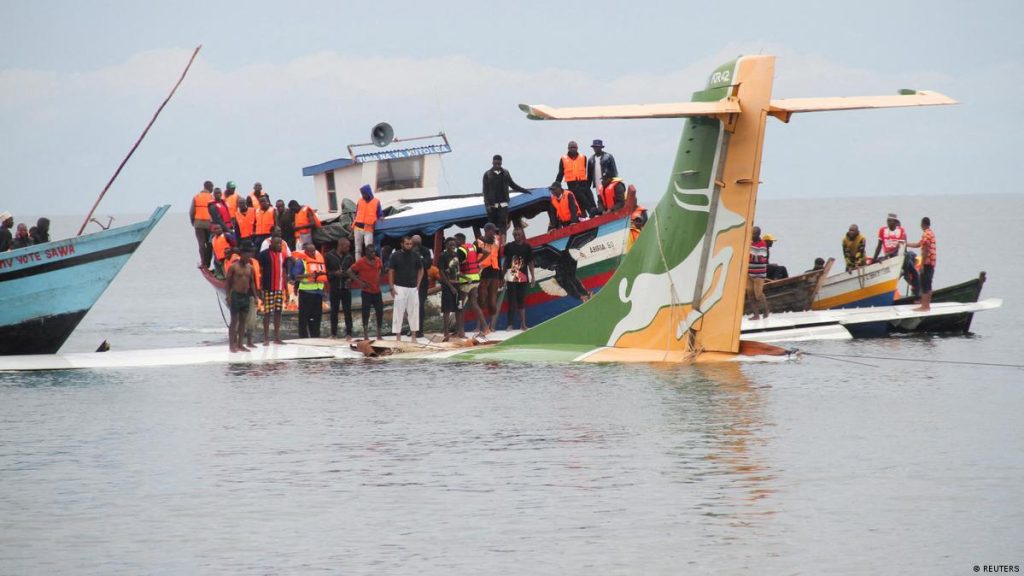
Tanzanian authorities said more passengers would likely have survived a deadly plane crash into Lake Victoria earlier this month had emergency workers been prepared and rescue operations launched swiftly.
Nineteen people died when the Precision Air plane plunged into Africa’s largest lake on November 6, prompting a frantic rescue effort by nearby fishermen who were first to arrive and used canoes to pluck people to safety.
Police blamed bad weather for the disaster but President Samia Suluhu Hassan promised a formal investigation into Tanzania’s worst aviation accident in decades as anger grew over the government’s handling of the rescue effort.
Rescuers ill-equipped
The transport ministry said Tuesday that the official search was delayed, and rescuers were ill-equipped to carry out their duties.
“If there could have been immediate rescue operations, it is most likely that more people would have survived,” the ministry’s air accident aviation branch said in its preliminary report.
There was a fire station staffed at the north western city of Bukoba, where the plane attempted to land on a third approach amid thunderstorms and strong winds just before 9am (0600 GMT).
But the 10 firemen present were not equipped for offshore operations when the plane nosedived sharply into the water, investigators said.
‘Chosen to divert’
Water rescues were carried out by a single police marine unit, which was notified 15 minutes after the crash, but did not arrive for another five hours as it was elsewhere on patrol.
“The boat arrived at the scene at around 1049 hours (1.49pm local time). However, divers were unable to perform their duties for lack of oxygen in the bottles” and insufficient fuel, the report said.
“Before the arrival of Police Marine Unit one of the local fishermen started the process of recovering of the dead bodies from the wreckage.”
The government should “build adequate capabilities” for its search and rescue teams, the report recommended.
Pilots unable to escape
Most of the victims were in the submerged front of the plane, while the two pilots were unable to escape the cockpit.
A crew member unlocked a rear door with the assistance of a “muscular” passenger who helped survivors into canoes and fishing boats that arrived minutes after the crash, the report said.
The approach at Bukoba is known for its difficulty in adverse weather conditions but the pilot was “very experienced” and from the area, it added.
But given the weather conditions — thick clouds, lightning, fog and strong winds were reported — the pilot “should have chosen to divert to Mwanza or to circle around until the weather condition improved”, the report said.
Investigators said the cause of the crash was still under inquiry “but the possibility of wind shear (downdraft) cannot be ruled out”.
Precision Air, which is partly owned by Kenya Airways, last week said it had started the process to compensate the families of those killed in the accident, but gave no indication about the amount due to them.






